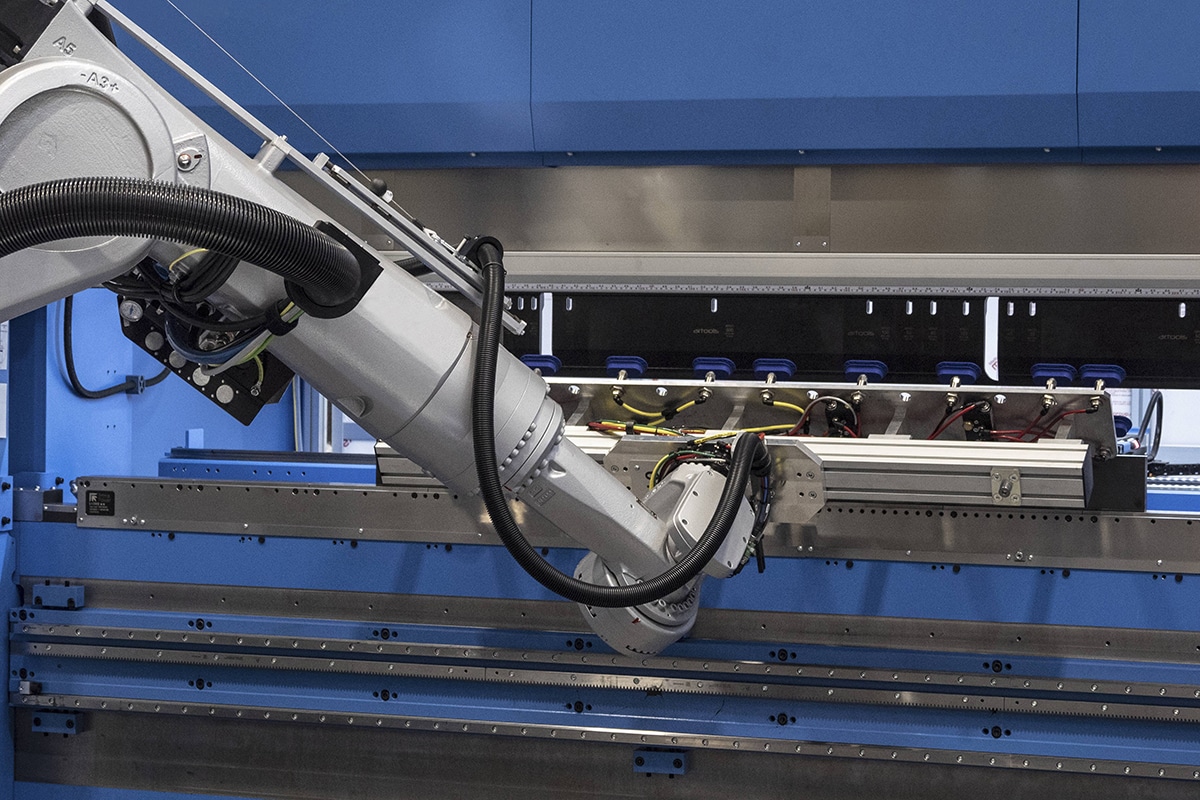
Industry 4.0 is not higher math
Digitization in manufacturing is not an option. It is more a question of when you start it rather than whether you work at it. Especially for SMEs, this poses challenges but equally benefits, as the application of Industry 4.0 can provide price and speed advantages over the competition. But then it's best to stay one step ahead of them. However, the changes initiated by the digital transformation involve more than technical solutions. Anyone who wants to make a success of it in their company needs a simple, clearly structured and organized "roadmap," which includes the various stages, duration, cost and alternatives.
For most companies, it is impossible to turn their way of doing business upside down overnight. Making work of digitalization therefore means ensuring continuity all the time. Before the transformation can begin, it is therefore good to assess how digitally mature your company already is. Then you will immediately know which work areas you can focus on in the first place. This is the basis for all the steps that follow in your transformation process, both for companies starting from scratch and for metallurgists who have already made some progress.
How to work out the practical side?

All processes should be re-examined according to their efficiency. By supporting them digitally, the organization can be simplified, errors can be avoided and more time can be spent on the core business.
SMEs are, by definition, limited in the budget and time they can free up for a digital transformation. Therefore, the key to success is simplification, always keeping a visible and measurable goal in mind. It is important to develop a structured approach that focuses primarily on four areas: customer relationship, employee requirements, workflow optimization and innovative business models. Other issues such as knowledge retention and what is needed to ensure cyber security can then be gradually woven into this. One can proceed in two ways. If sufficient digital affinity is already present, one can start the transformation process from the inside out. But if the right skill set is lacking, you can turn to technology companies, federations or organizations or call on the expertise of consultants. A lot of knowledge institutions now have enough experience with digitalization to check the maturity.
Considering customers, suppliers, employees and competitors

The key to success is simplification, always keeping a visible and measurable goal in mind.
This includes looking beyond the production process itself. How far are my customers already in digitalization? What do they expect from their service providers? Do suppliers already work digitally? How attractive is my work environment for employees? How far along are my competitors? Are they already reaping the benefits of digitization? But above all, keep in mind that the connection to the digital world must above all be structured. If not, it risks becoming too complex. Hence the importance of a digital roadmap that best starts from those areas where the need for action is greatest. Above all, one must ask oneself a lot of questions and find the right answers to them. These will form the backbone of the road map. Digital transformation should not become a violent intervention that overthrows the way business is done. It is about planning and strategic thinking to connect existing skills with the values and success models of the digital world. In every industry, there are already companies reaping the benefits. This is why it is important to embark on the transformation process.
A flexible digital road map
It is essential that the path to digital transformation look as simple as possible. Therefore, choose three small steps. Start by adapting the corporate culture to a digital economy. Paper and pen should be replaced with digital working methods whenever possible. By securing knowledge about technical aspects, customers and orders digitally, one can gradually create a less hierarchical structure. Indeed, information then becomes available throughout the company, enabling boundaries can blur. A second step is to adjust the business structure. All processes must be reexamined in terms of their consistency and efficiency. By supporting them digitally, the organization can be simplified, mistakes can be avoided and more time can be spent on the core business. Important here is the digital storage and analysis of data to have a continuous overview of the business. Training will also be crucial to ensure that your employees can keep up with the pace of digital transformation. The third step then is to adapt and upgrade the IT in place, either internally or externally. The key is to ensure that the digital tools needed to implement the new working methods and processes are in place.
Not reinventing the wheel

Start by adapting corporate culture to a digital economy. Paper and pen should be replaced with digital working methods whenever possible.
Digitalization will only be successful if you get all noses in the same direction. Your employees must actively welcome digitization into the workplace with open arms. Review with your HR manager and your employees how best to go about this. In digitization, technology is really only the means to an end and not necessarily the priority. Look at successful examples of digitization as well as the failures. Ideas and inspirations from others can help strengthen one's own procedures and pace. But not everything will be able to be implemented 1 to 1. Some are specific to a particular industry or scale. Finally, (cyber) security should not be overlooked. Mere firewall and antivirus software will no longer suffice. The data that your digitization process will produce are a precious commodity. Handle it consciously and use available digital tools wisely.



